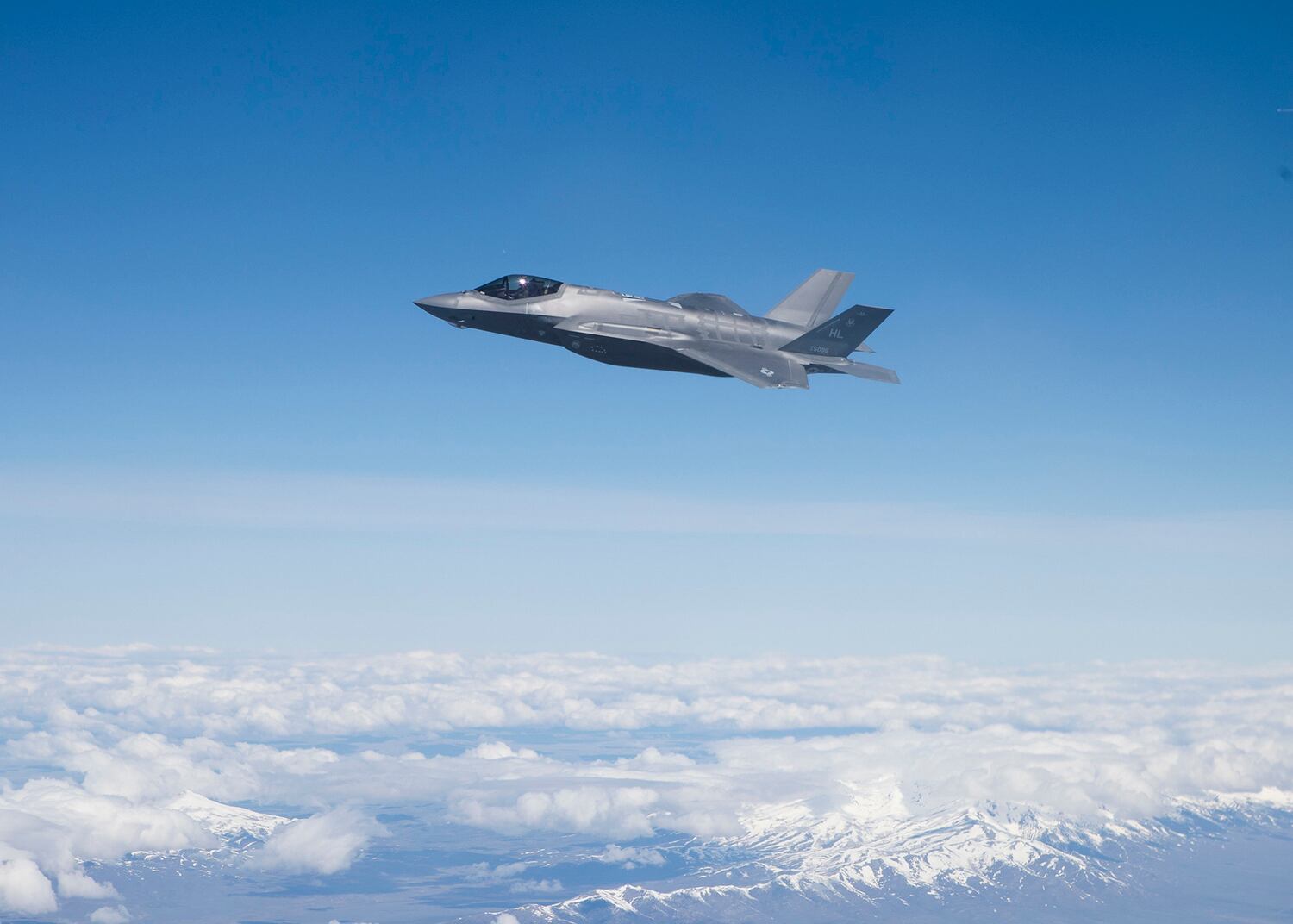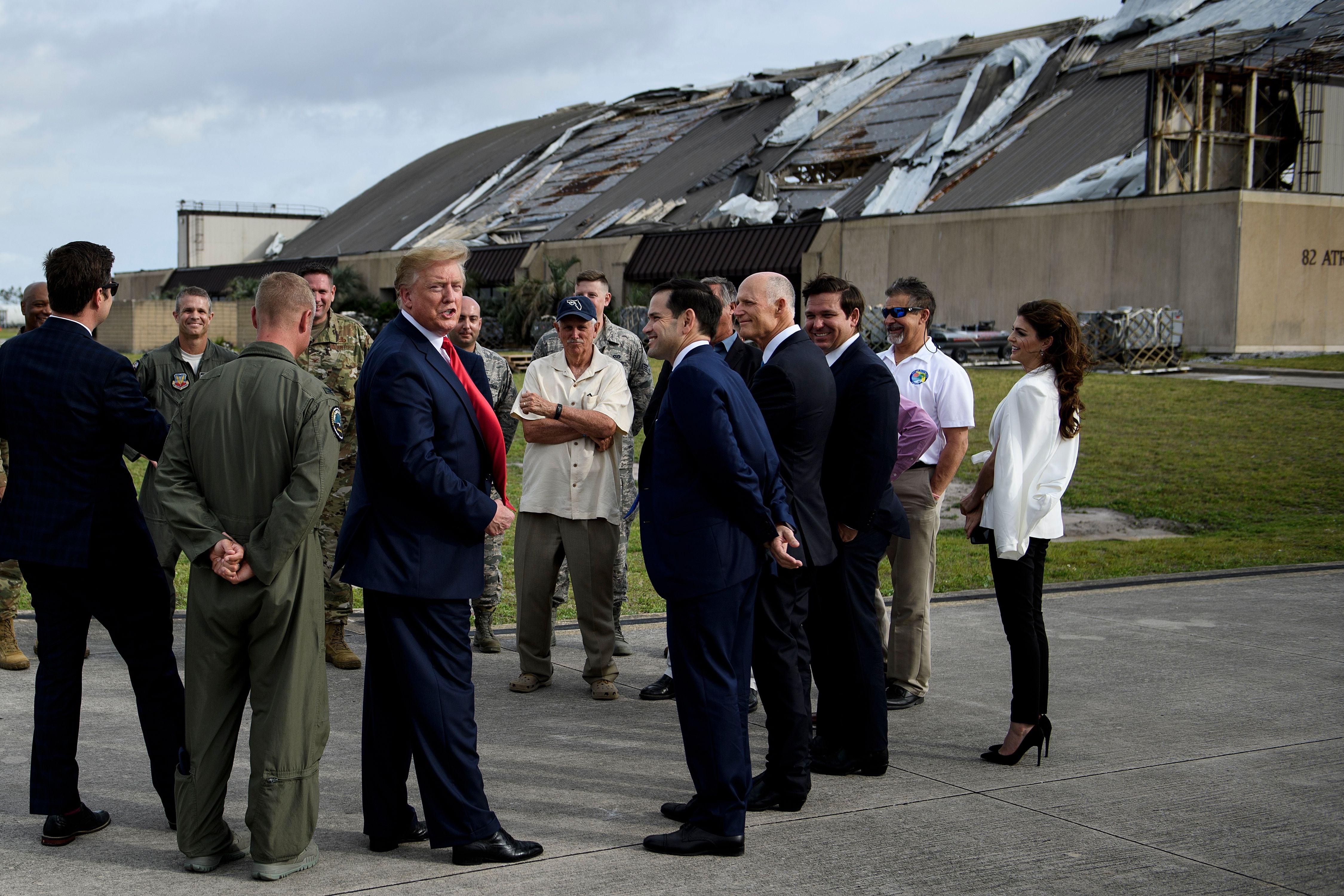Three F-35A squadrons will officially call Tyndall Air Force Base, Fla., home starting in September 2023, the Air Force announced Monday.
Seventy-two Lightning IIs will join the 325th Fighter Wing, which previously handled F-22 Raptors at the Florida Panhandle base. Each squadron will take charge of 24 aircraft. An additional six jets will be available as backup inventory.
The Air Force has been working on the plan for nearly three years. When Hurricane Michael, a Category 5 storm, largely destroyed the base in 2018, the Air Force relocated 46 F-22s to other Raptor installations. But instead of opting to bring F-22s back home, the federal government opted to design an “installation of the future” that could accommodate its newest fifth-generation fighter.
RELATED

The service considered, but ultimately decided against, bringing four F-35 squadrons, or 104 total aircraft, to the installation, according to the Air Force’s March 19 basing decision.
“Adding F-35 squadrons at Tyndall ensures airmen will continue to have a strategic advantage as the 325th Fighter Wing enhances fighter training and combat readiness,” wing commander Col. Greg Moseley said in a release.
Service officials chose Tyndall to house the advanced fighters because of its infrastructure, airspace, and quality of life for its personnel. Much of that infrastructure is being rebuilt as part of an overhaul slated to cost nearly $5 billion over five to seven years.
Despite the area’s vulnerability to hurricanes and sea level rise along the Gulf of Mexico, Tyndall enjoys prime real estate for high-end, live-fire training at the 130,000-square-mile Gulf Range Complex that stretches over the water.
“The airspace surrounding Tyndall is a national treasure,” Moseley said. “The type of training conducted here integrates the DOD’s most advanced aircraft and builds a dynamic force.”
RELATED

A three-squadron F-35A wing at Tyndall would bring around 2,200 personnel to the base, including 169 officers and 1,931 enlisted airmen, the Air Force said. About a dozen Defense Department civilians and nearly 90 base support personnel would join as well. USAF anticipates nearly 3,000 dependents, about half of whom are children, would accompany those employees.
“The F-35A wing would fly an average of 47 sorties per flying day, with each sortie lasting approximately 1.4 hours … during 260 flying days per year,” the Air Force said.
The fighter jets would generate the same or less noise as the F-22s that preceded them, the Air Force said.
Air Force leaders haven’t made a final decision on where to permanently base Tyndall’s F-22 Formal Training Unit, and are studying the potential environmental impacts of a move. The training unit could relocate to Joint Base Langley-Eustis, Va., or continue operations from both Tyndall and nearby Eglin AFB, Fla., 325th Fighter Wing spokesperson Capt. Sarah Johnson said.
The planes were divided up across Langley. Joint Base Elmendorf-Richardson, Alaska, and Joint Base Pearl Harbor-Hickam, Hawaii, after the hurricane.
The Air Force is also debating whether to bring MQ-9 Reaper drones to Tyndall or Vandenberg AFB, Calif. It deferred that decision to a later date, according to the F-35 basing paperwork.
Rachel Cohen is the editor of Air Force Times. She joined the publication as its senior reporter in March 2021. Her work has appeared in the Washington Post, the Frederick News-Post (Md.), Air and Space Forces Magazine, Inside Defense, Inside Health Policy and elsewhere.





